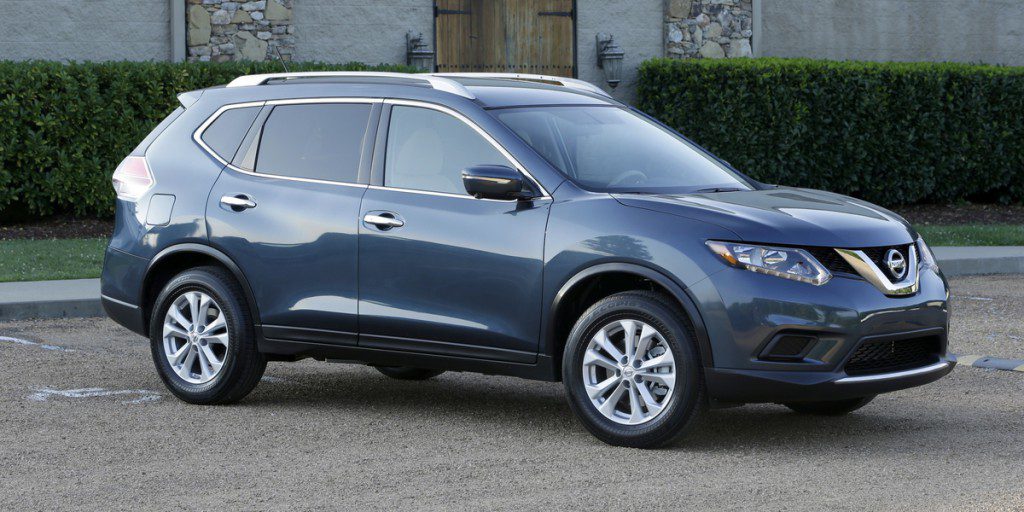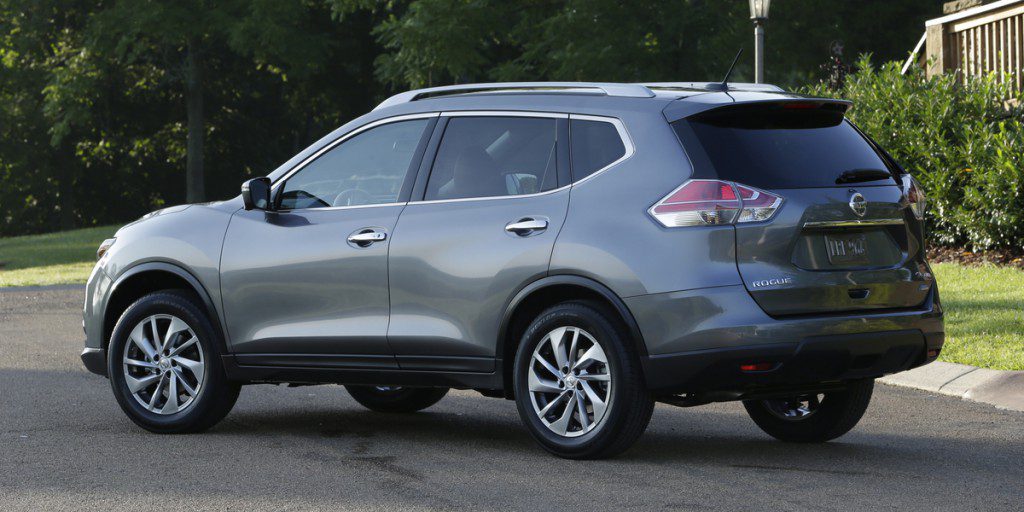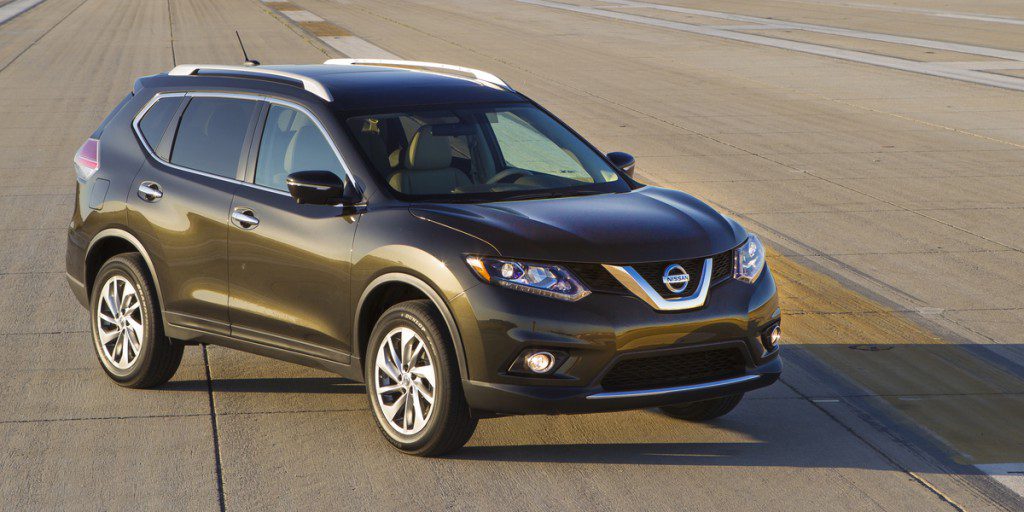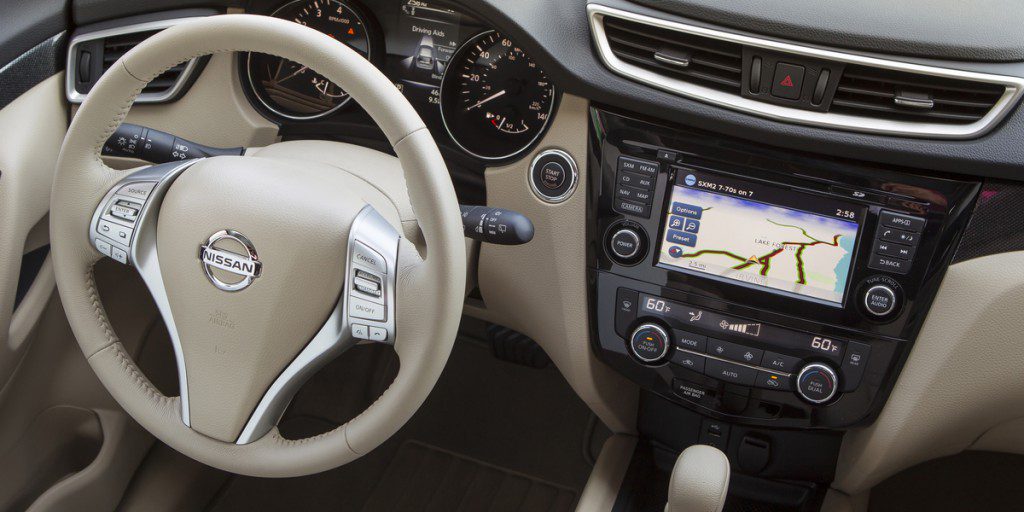Rogue’s CVT automatic transmission is probably a boon to fuel economy, and perhaps acceleration, but it may feel strange to those used to a conventional automatic. In normal driving there’s little difference, but under spirited acceleration, it lets the engine rev up and then holds it there, whereas engine revs rise and fall with gear changes in a conventional automatic. This is the case with virtually all CVTs, but Nissan does them as well as anyone. Nail the gas, and the Rogue’s 170-horsepower 2.5-liter 4-cylinder engine provides a good jump from a stop, but then acceleration slows a bit until picking up again. Hitting the throttle while underway results in a fairly quick “kickdown” and decent passing power. Employing the Sport mode (via a button on the lower left of the dash) keeps engine revs a bit higher under cruise, which makes the vehicle slightly more responsive to throttle inputs, but doesn’t help fuel economy any.
The EPA rates the AWD Rogue at 25 mpg city and 32 mpg highway. Over 298 miles, Consumer Guide’s Rogue SL AWD averaged 21.6 mpg with a 60% city and 40% highway mix.
A well-damped suspension kept the ride fairly serene.
Steering is light and handling is nimble, with moderate cornering lean. Braking was prompt and easily modulated.
Except when pushed hard, the engine is generally smooth and quiet, and even when roused it is not especially noisy as it seeks cruising mode. On anything but glass-smooth surfaces, there was a slight “rumbling” that could be both heard and felt.
Big gauges greet the driver. Climate controls were easy to reach and use, as were audio settings accessed through the 7-inch color touchscreen that also served the SL’s standard navigation system. In addition to the voice-command-capable nav system, the included NissanConnect infotainment set-up includes satellite radio and traffic information, and an app suite. Bluetooth hands-free phone and text-messaging capability is standard in all Rogues.
Our test car was brightly turned out in tan upholstery, with black on the tops of the dash and doors. Metallic panels on the dash and doors added a little sparkle. The lower dash panel was hard plastic that was nonetheless nicely grained to harmonize with the look of the other materials. Interior materials are near top-of-the-class, as is the overall look.
Rogue offers a high, commanding driving position. Visibility is decent to the front corners, unusually good to the sides, but really poor to the rear corners.
Rear passengers will find excellent seating space and comfort. Three can sit in the back, thanks to a fairly broad rear seat. There’s a slightly raised driveline tunnel in the floor, but it can be worked around. The folding 40/20/40 seats also have a 60/40 fore-aft adjustment. Entry and exit are uncomplicated.
The optional 3rd row is really sized for teens or smaller folks.
Passengers are served by a large glove box, a moderately sized console cubby with an electric power point within, two open console cup holders, and a couple of shallow bins, including one under the dash with a USB port and another power plug-in. Rear passengers have pouches in the seat backs ahead of them, plus a pull-down center arm rest with two cup holders molded in. All four doors have pockets with bottle holders in them.
Even with the rear seats up there is an ample cargo floor. For longer items, the seats fold almost—but not fully—flat. The cargo floor’s clever secret is that it is made up of panels that can be removed and slipped into slots molded into the interior sidewalls that allow for multilevel storage or divided areas to keep things that shouldn’t mingle from bumping into one another. Nissan calls this cargo-management system “Divide-N-Hide.”




